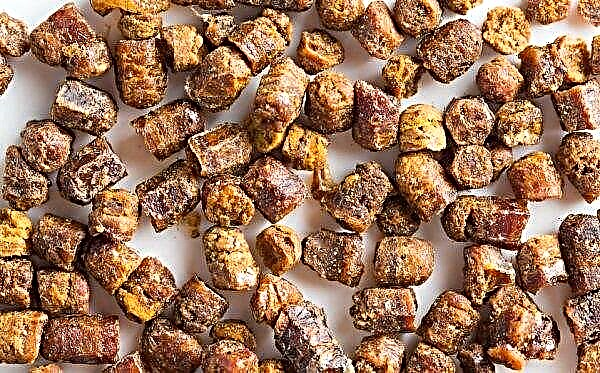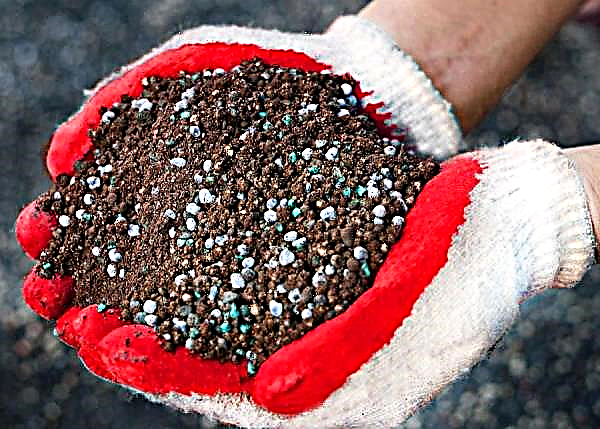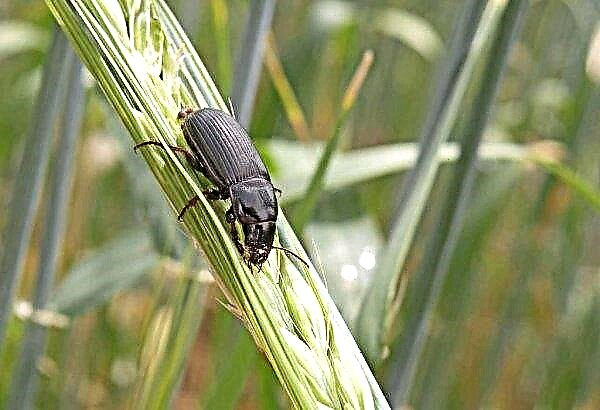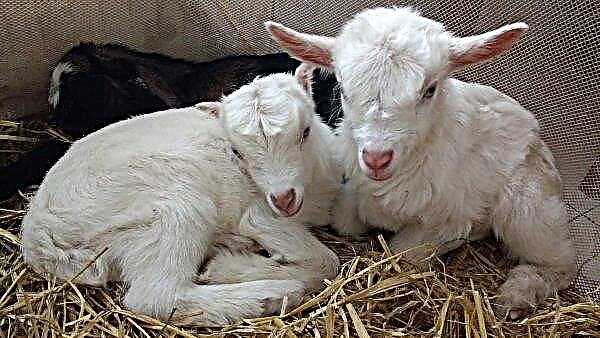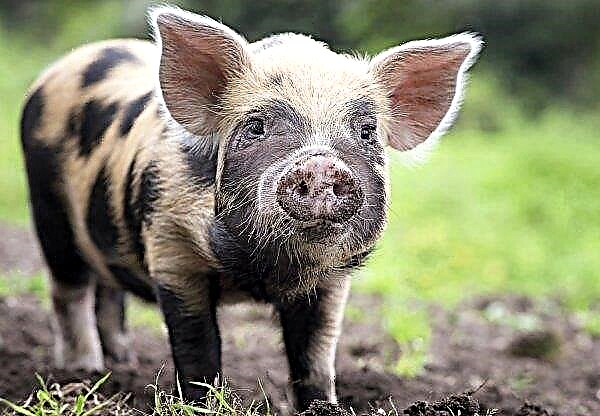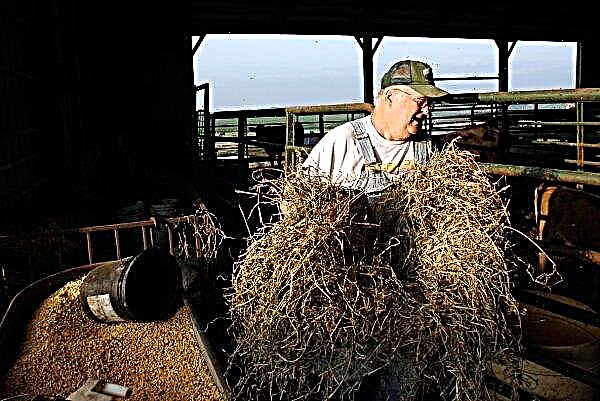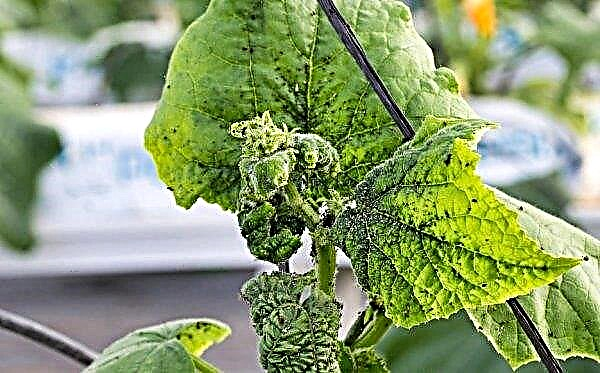Amanita is a poisonous mushroom that not only experienced mushroom pickers know about, but also young children. It should not be eaten categorically, because it can lead to death. But not all fans of picking mushrooms are aware that there is a fly agaric completely edible, called gray-pink. How it looks, whether it can be distinguished from dangerous relatives, and where to apply, read on.
Description
Amanita rubescens - A representative of the kingdom of the Mushrooms, the Amanitov family, the genus Amanita. It has other names besides gray-pink: blushing, pearl, pink.

It has a number of external signs, thanks to which it can be recognized:
- the hat in young specimens has a rounded shape, which, as it grows, opens and becomes open and flat, with a diameter of up to 15–20 cm;
- the skin is gray-pink in color, covered with pink or gray small plaques, is easily separated from the hat, a little sticky, glossy in appearance;
- the leg has a cylindrical shape about 10 cm long, up to 3 cm wide, in adult mushrooms it is empty inside, white or pink, slightly thickened at the base;
- the pulp of the legs of young fruits is dense, fleshy, white;
- on the leg there is also a wide hanging ring, first light, and then pink;
- plates on the hat are white, wide, densely arranged;
- does not have a characteristic odor.
Important! The cut-off point of the fly agaric becomes red in the course of time, which is why it is called red or gray-pink.
Where and when does it grow?
The growth medium of amanita gray-pink are deciduous, coniferous and mixed forests with a temperate climate. More often, the mycelium is located near a pine or birch. It can also grow near the road and on any soil. Fruits in one or in small groups. You can harvest from June to October.
Edibility
Amanita blushing refers to conditionally edible fungi. In its raw form, it contains thermolabile toxic substances, which disappear during heat treatment. Experienced mushroom pickers advise in no case to eat the mushroom in its raw form, before boiling it, it is thoroughly boiled, the water is drained, and then it can be further used as intended (fry, bake, salt, etc.).
Did you know? The Vikings became famous for their fearlessness, thanks to the fly agaric tincture, which they consumed before the battle: the drink made the soldiers immune to pain and dulled the fear of death.
How to distinguish from poisonous doubles?
Amanita pearl has several very similar outwardly representatives of a kind - panther fly agaric (Amanita pantherina) and thick (Amanita spissa) Both the first and second mushrooms are poisonous and pose a threat to the human body.

It is often difficult for inexperienced mushroom pickers to distinguish a gray-pink fly agaric from its dangerous relatives. But still they have some distinctive qualities that are visible to the naked eye and allow professionals to immediately determine what can be taken into the basket and what cannot.
Amanita panther (Amanita pantherina)
It grows in the same places as blushing.
It differs from an edible mushroom in the following signs:
- has an unpleasant odor;
- the flesh is white, does not change color over time;
- a hat with a diameter of 4-12 cm, first round, then open, at the edges there may be hanging flakes;
- the skin is brownish, brownish or dirty gray in color, smooth, shiny, with many small white flakes that are easily separated from it;
- lamellae are white, frequent, do not grow to the stem, old mushrooms have brown spots;
- leg 4–12 cm long, 1–1.5 cm in diameter, white, cylinder-shaped, tapers slightly at the top, widens below, covered with a weak pile;
- the ring is quite low, smooth, not wide, hanging, can sometimes be absent, its upper surface is striped;
- possesses a collar Volvo at the base of the leg.

Amanita thick (Amanita spissa)
Amanita thick also has some differences from gray-pink.
These include:
- the flesh is white and gray, hard, not changing its color;
- unpleasant odor;
- a hat with a diameter of 10-15 cm, first spherical, later flat;
- the skin is gray or brown with a darker center, mucous in wet weather, and silky-fibrous in dry;
- the plates are thick, adhered to the stem, narrow, white, between each pair there are plates;
- leg 5–12 cm long, 1.5–3 cm in diameter, cylindrical, empty, base thickened;
- the ring is white or light pink.
 Amanita muscaria is considered an edible fungus, but has a specific taste. It is also very similar to panther, and it is not recommended to collect it for inexperienced mushroom pickers.
Amanita muscaria is considered an edible fungus, but has a specific taste. It is also very similar to panther, and it is not recommended to collect it for inexperienced mushroom pickers.
Taste qualities, therapeutic effect, benefits and possible harm
Amanita gray-pink appears in the summer in the forest as one of the first mushrooms. In addition to good taste, it also has healing properties. Depending on the amount of use and application, it can bring both benefits to the human body and harm.
Did you know? In ancient Russia, fly agarics were used to fight flies (hence the name). Pieces of the mushroom were poured with milk, covered with a cloth and placed in the place of the largest accumulation of insects. The flies drank the poisoned product and soon died.
- The main qualities of the pearl mushroom include:
- It has excellent nutritional characteristics after heat treatment, tastes like chicken meat;
- used for the manufacture of drugs that improve liver function;
- contains material that helps to normalize metabolism;
- included in dietary supplements;
- tinctures from this fungus are used to combat Staphylococcus aureus;
- rubescenslisin, which is part of the composition, is able to destroy red blood cells in the blood;
- low-calorie product that helps to remove excess weight;
- contains a large amount of protein;
- it is not recommended to eat pregnant women, nursing mothers, children, allergies, people with diseases of the gastrointestinal tract.

Amanita gray-pink is very fond of picking mushroom pickers. Dishes prepared from it bring nutritional pleasure to a large number of people. To avoid negative consequences, it is necessary to take only mushrooms, in which there is no doubt of edibility, and it is necessary to conduct a long heat treatment before use.



